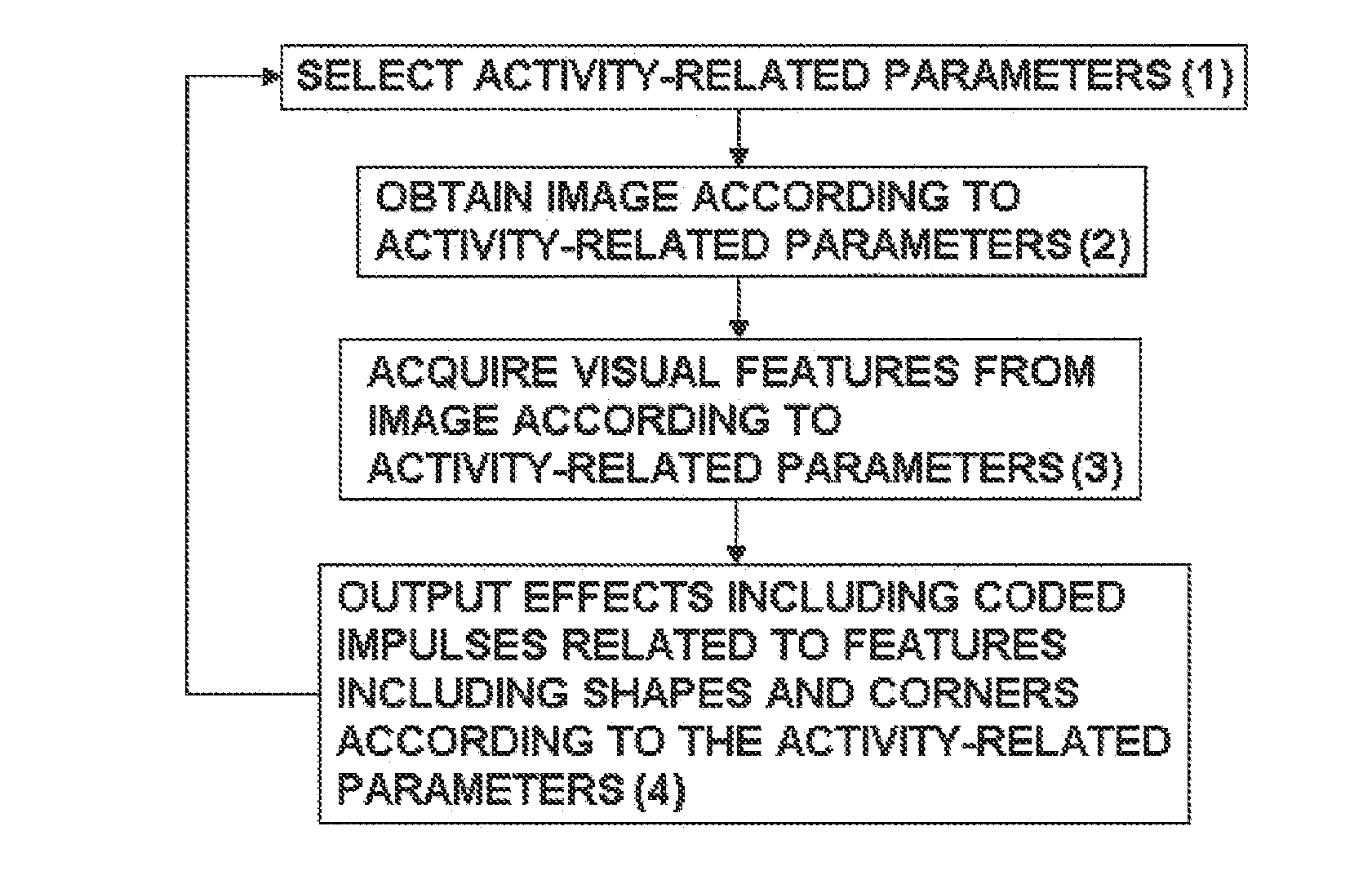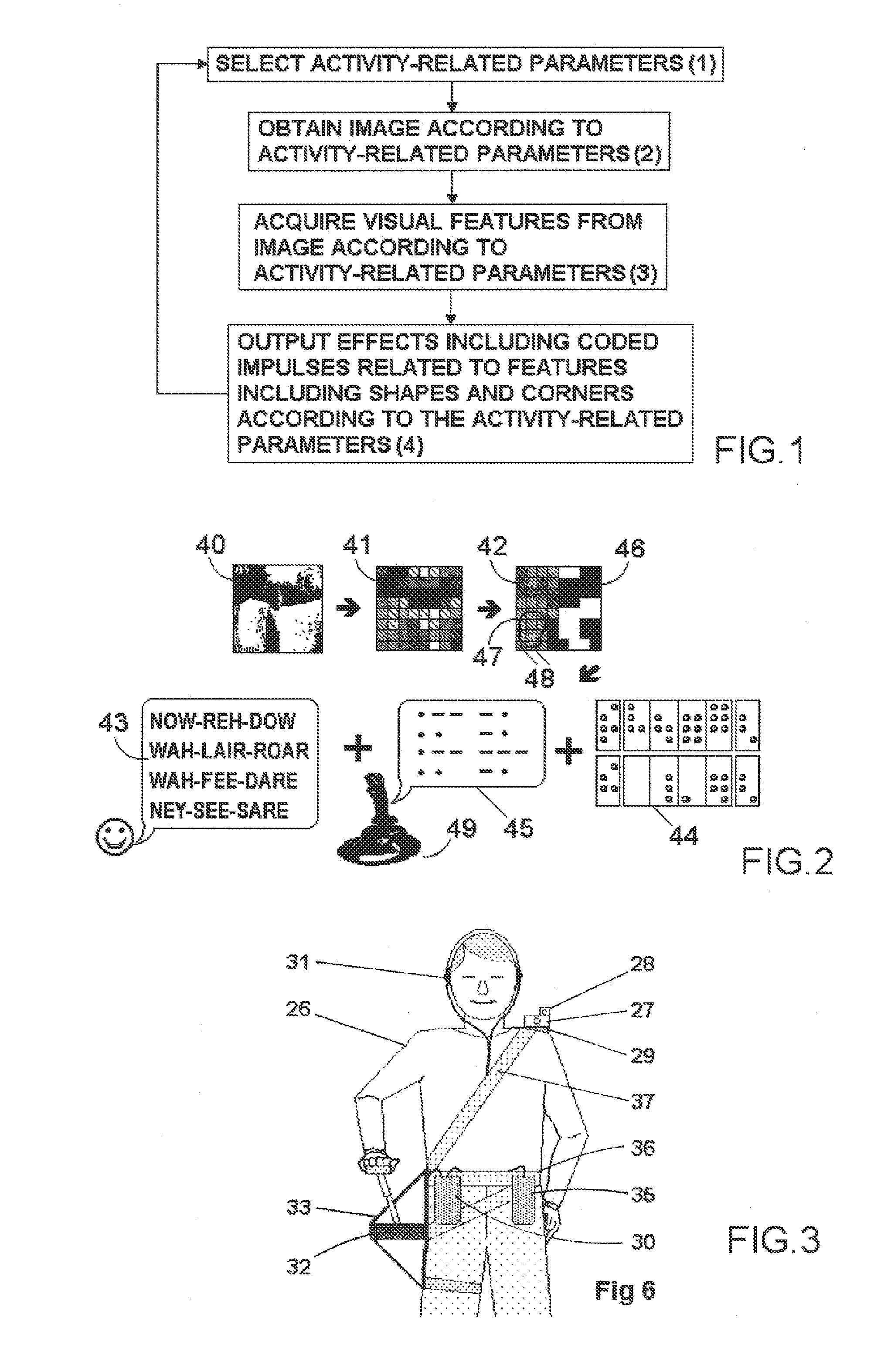Audiotactile Vision Substitution System
- Summary
- Abstract
- Description
- Claims
- Application Information
AI Technical Summary
Benefits of technology
Problems solved by technology
Method used
Image
Examples
Embodiment Construction
[0048]The embodiments address the highlighted prior art issues by:
[0049]a) Allowing the user to rapidly switch between sets of parameters by selecting particular activity identifiers, or switch to a “general” set of parameters. The activity identifier selected can also determine options other than the filtering, for example the output configuration to use.
[0050]b) Using coded impulse communication when the amount of categorical information to be presented is modest. Such communications can be received haptically on many possible parts of the body. Such tactile effects do not interfere with the user's hearing.
[0051]c) Emphasizing the corners within shapes. This feature greatly improves perception of shapes via audio and tactile means.
[0052]The embodiments model aspects of visual perception by modeling the way things are perceived rather than conveying raw optical measurements. This is achieved by using categorical sounds and tactile effects to represent those features of vision that ...
PUM
 Login to View More
Login to View More Abstract
Description
Claims
Application Information
 Login to View More
Login to View More - R&D
- Intellectual Property
- Life Sciences
- Materials
- Tech Scout
- Unparalleled Data Quality
- Higher Quality Content
- 60% Fewer Hallucinations
Browse by: Latest US Patents, China's latest patents, Technical Efficacy Thesaurus, Application Domain, Technology Topic, Popular Technical Reports.
© 2025 PatSnap. All rights reserved.Legal|Privacy policy|Modern Slavery Act Transparency Statement|Sitemap|About US| Contact US: help@patsnap.com



